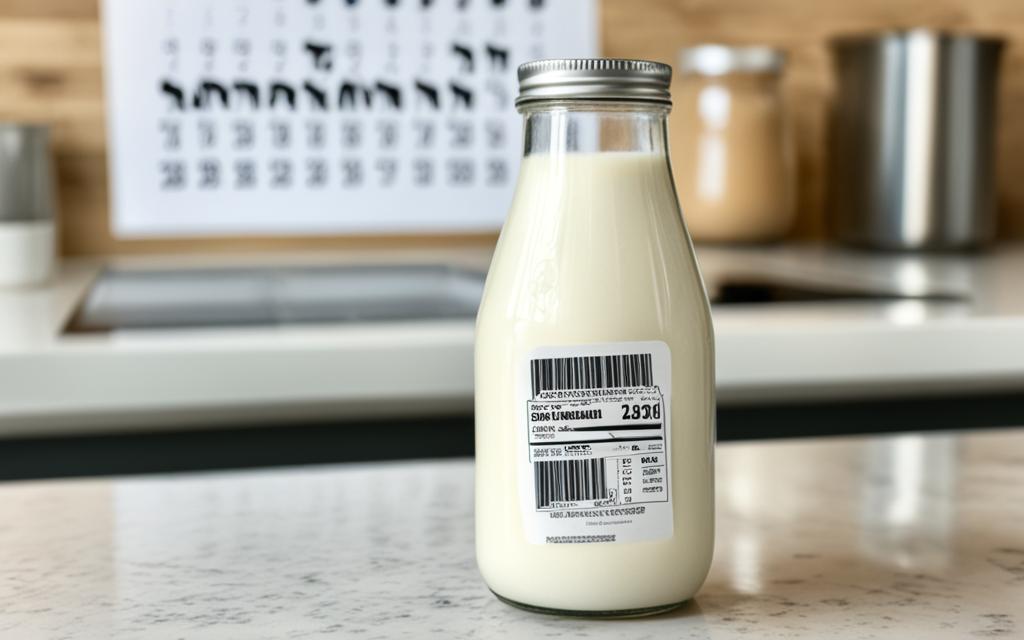When it comes to the versatile world of plant-based milks, oat milk has quickly become a fan favorite. Its creamy texture and subtle flavor make it a fantastic addition to your morning coffee, smoothies, and baked goods. But have you ever wondered, how long does oat milk last? Ensuring your oat milk stays fresh is crucial for maintaining its delicious taste and nutritional benefits. In this comprehensive guide, we’ll dive into the shelf life of oat milk, the best storage methods, and the signs that your oat milk has spoiled.
Whether you’re a seasoned oat milk enthusiast or just starting to explore the world of plant-based beverages, understanding the shelf life of oat milk and how to properly store oat milk is essential. By the end of this article, you’ll have all the information you need to keep your oat milk tasting its best and avoid any unwanted surprises.
Understanding the Shelf Life of Oat Milk
The shelf life of oat milk is influenced by a variety of factors, including the manufacturing process, packaging, and storage conditions. Commercially produced oat milk typically has a longer shelf life compared to homemade versions, as the commercial products often contain preservatives and undergo pasteurization, which helps extend their lifespan.
The type of packaging used for oat milk can also impact its shelf life. Sealed, airtight containers like cartons or bottles tend to keep oat milk fresh for longer periods compared to open or loosely sealed containers. The packaging helps protect the milk from exposure to air, light, and other environmental factors that can accelerate spoilage.
In addition to the manufacturing and packaging factors, proper storage conditions also play a crucial role in determining the shelf life of oat milk. Maintaining the milk in a cool, refrigerated environment is essential to slowing down the growth of bacteria and preserving its freshness for as long as possible.
How Long Does Oat Milk Last?
Unopened oat milk typically has a shelf life of 7-10 days when stored in the refrigerator. Once opened, the shelf life is reduced to 5-7 days. It’s important to note that these are general guidelines, and the actual shelf life may vary depending on the specific brand and storage conditions.
Some oat milk products may have a longer shelf life, so it’s always a good idea to check the “best by” or “use by” date on the packaging. By understanding the typical shelf life of oat milk, you can ensure you enjoy your plant-based beverage at its freshest.
Proper Storage for Maximizing Oat Milk’s Freshness
To ensure your oat milk stays fresh for as long as possible, it’s essential to store it properly. Refrigeration is the best way to store both unopened and opened oat milk. Keep it in the coldest part of your fridge, typically the back, and avoid storing it in the door, where the temperature fluctuates more.
If you need to store oat milk for an extended period, you can freeze it. However, freezing may affect the texture and consistency of the milk, so it’s best to use frozen oat milk for cooking or baking rather than drinking it straight. To freeze oat milk, simply pour it into an airtight container or freezer-safe bag, leaving a little room for expansion, and store it in the freezer for up to 3 months.
| Storage Method | Shelf Life |
|---|---|
| Refrigerator (Unopened) | 7-10 days |
| Refrigerator (Opened) | 5-7 days |
| Freezer | Up to 3 months |
Remember, the specific shelf life of your oat milk may vary depending on the brand, processing methods, and your storage conditions. Always check the “best by” or “use by” date on the packaging and be sure to store your oat milk properly to maximize its freshness and enjoy it at its best.
Signs That Oat Milk Has Spoiled
Recognizing the signs of spoiled oat milk is crucial to ensure your plant-based beverage remains safe and enjoyable. Some common indicators that your oat milk has gone bad include:
- Sour or off smell – If the oat milk has a distinct sour or unpleasant odor, it’s likely spoiled and should not be consumed.
- Discoloration – Look for any changes in the milk’s color, such as yellowing or separation, which can signal it has gone bad.
- Thick or lumpy texture – Spoiled oat milk may develop a thick, gloppy, or clumpy texture, rather than its usual smooth and creamy consistency.
In addition to visual and olfactory cues, trust your taste buds. If the oat milk has a sour, bitter, or unpleasant aftertaste, it’s a clear sign that it has spoiled and should be discarded immediately. When in doubt, it’s always best to err on the side of caution and throw out any oat milk that doesn’t seem quite right.
Conclusion
In conclusion, understanding the shelf life and proper storage of oat milk is crucial for ensuring you can enjoy your plant-based beverage at its freshest. By following the guidelines outlined in this article, you can maximize the lifespan of your oat milk and avoid the risk of consuming spoiled products. Remember to check the expiration date, store oat milk in the refrigerator, and be vigilant for signs of spoilage.
With this knowledge, you can confidently incorporate oat milk into your diet and enjoy its delicious, nutritious benefits. Whether you’re a seasoned oat milk enthusiast or just starting to explore the world of plant-based milks, this comprehensive guide will help you make the most of your oat milk purchases and ensure you’re always enjoying a fresh, flavorful product.
So, the next time you reach for a carton of oat milk, remember the key insights you’ve learned here. Proper storage, expiration date monitoring, and recognizing signs of spoilage will all contribute to your ability to savor the creamy, plant-based goodness of oat milk to the fullest. Embrace the versatility and health benefits of this dairy-free alternative, and let it become a staple in your kitchen.










